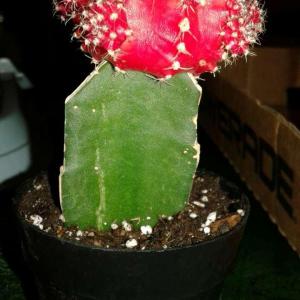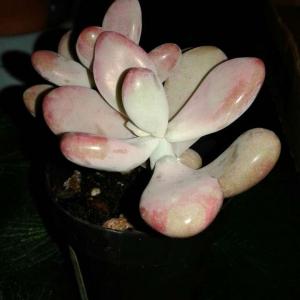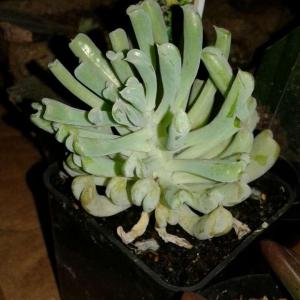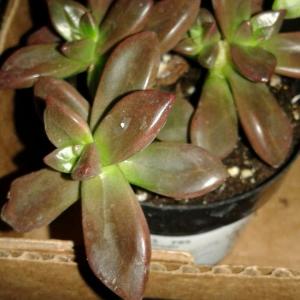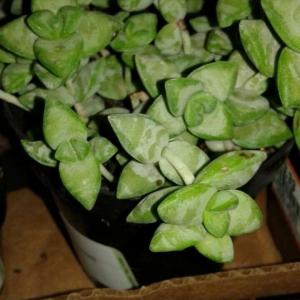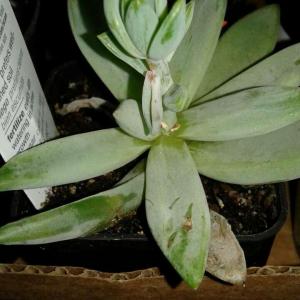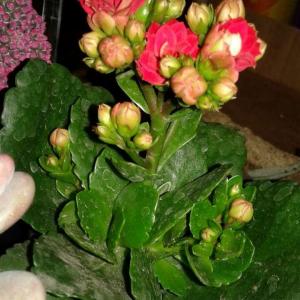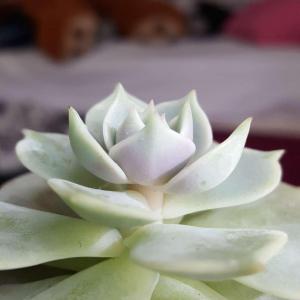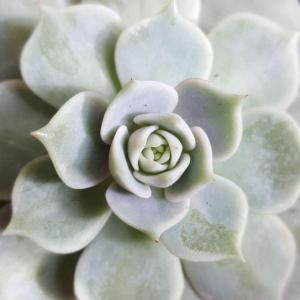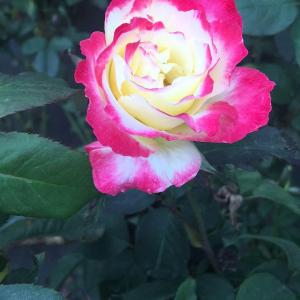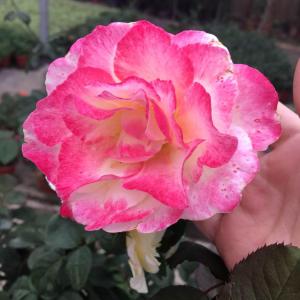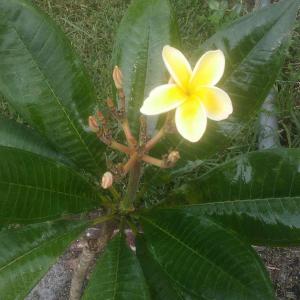成长记
Diann Tuttle
2017年11月04日

I now added "this is a beautiful mix of marigolds and nostrums a piece of my garden" in my "garden"


3
0
成长记
astronbot
2017年10月21日

no changes that I can see. I just wanted to snap a pic because she looked especially beautiful today!!
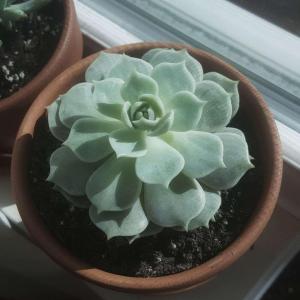

4
0
文章
Dummer. ゛☀
2017年10月08日

With a light and elegant appearance, baby's breath
is a beautiful bedding plant that can fill your
garden area with tiny clouds of white showy flowers.

About baby's breaths
Most popularly used as a cutting plant, baby's breath is a dense flowering border and bedding plant covered with tiny, loosely-scattered, white flowers. You can purchase both annual or perennial varieties. Perennial baby's breath will bloom for a long period during the mid-summer season. The annual plant will bloom for the summer, then die-off, whereas perennial varieties continue to bloom year after year.

Choosing a site to grow baby's breaths
Baby's breath is best grown in full sun, although it will get by with as little as 4 hours of direct sun. In full sun, baby's breath is easy to grow and is drought tolerant as well. It prefers rich, well drained or sandy soil conditions.
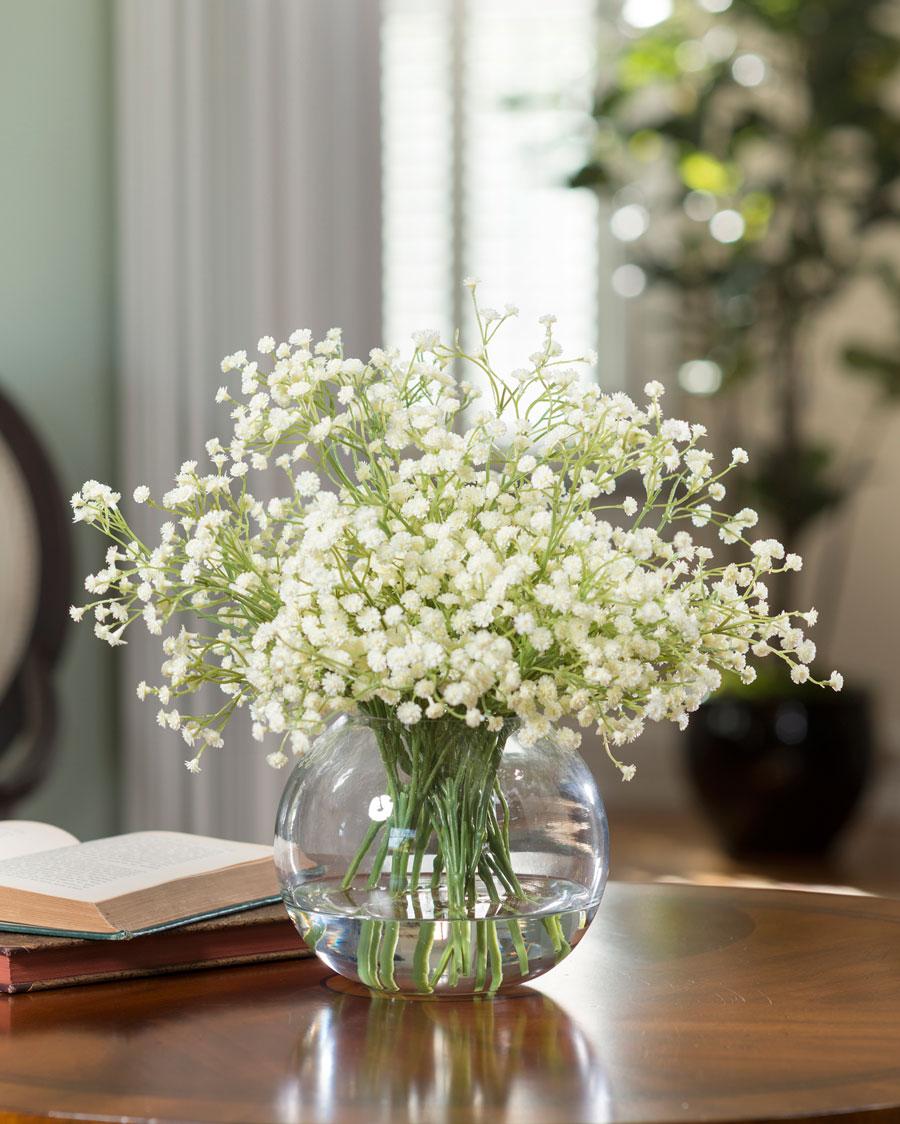
Planting Instructions
Plant baby's breath in early spring. Plant at the same depth that the plant was growing in its container. Because baby's breath is susceptible to stem rot, be sure to grade the soil away from the plant to help prevent water collecting and damaging the plants.
Ongoing Care
Staking will help support the plant, but because the plant is so brittle, be sure to stake baby's breath plants well before the summer blooms appear to avoid damaging the plant. In cooler climates, mulch your perennial baby's breath in the fall to help protect the plant during the winter period.
is a beautiful bedding plant that can fill your
garden area with tiny clouds of white showy flowers.

About baby's breaths
Most popularly used as a cutting plant, baby's breath is a dense flowering border and bedding plant covered with tiny, loosely-scattered, white flowers. You can purchase both annual or perennial varieties. Perennial baby's breath will bloom for a long period during the mid-summer season. The annual plant will bloom for the summer, then die-off, whereas perennial varieties continue to bloom year after year.

Choosing a site to grow baby's breaths
Baby's breath is best grown in full sun, although it will get by with as little as 4 hours of direct sun. In full sun, baby's breath is easy to grow and is drought tolerant as well. It prefers rich, well drained or sandy soil conditions.

Planting Instructions
Plant baby's breath in early spring. Plant at the same depth that the plant was growing in its container. Because baby's breath is susceptible to stem rot, be sure to grade the soil away from the plant to help prevent water collecting and damaging the plants.
Ongoing Care
Staking will help support the plant, but because the plant is so brittle, be sure to stake baby's breath plants well before the summer blooms appear to avoid damaging the plant. In cooler climates, mulch your perennial baby's breath in the fall to help protect the plant during the winter period.
5
3
求助
Ueca
2017年10月07日

Anyone know what this is? It's beautiful, so it's an absolute shame I don't know what its name is.
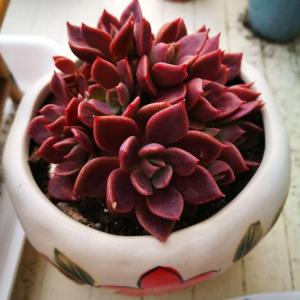

7
3
Ueca:I found the name. It's called Sinocrassula indica. It looks like Echeveria but comes from the Old World.
Ueca:Here is an older photo of it, in the summer.
文章
Dummer. ゛☀
2017年10月01日

Scientific Name
Graptopetalum superbum (Kimnach) Acev.-Rosas
Common Names
Beautiful Graptopetalum
Synonyms
Graptopetalum pentandrum subsp. superbum
Scientific Classification
Family: Crassulaceae
Subfamily: Sedoideae
Tribe: Sedeae
Subtribe: Sedinae
Genus: Graptopetalum
Description
Graptopetalum superbum forms 5 inch (12.5 cm) wide flat open rosettes with fleshy, thick pale gray-lavender to pink colored leaves that cluster in rosettes at the end of thick stems. Old plants have been noted with stems as long as 7 feet (2.1 m) but more typically this plant remains fairly compact, especially when grown in full sun. In late winter to early spring arise up to 2 foot (60 cm) tall, open multiple-branched inflorescences holding dainty flowers with pale yellow petals with red markings on the tips, and with red sigma lobes and stamens.
How to Grow and Care
The rules for Graptopetalums care are similar to those for most succulents. All require lots of sun to look their best. They require gritty porous soil with excellent drainage. Water regularly over the summer months letting the soil dry out between waterings. Minimal water is required over winter. Overwatering is a cause of root rots and the plant can get several pest infestations. Fertlize once during the growing season with a balanced fertilizer diluted to ¼ strength.
The Graptopetalums are generally easy to propagate, by seeds, leaf cuttings or offsets. Any rosette that breaks off has the potential to root and start a new plant. Even a leaf that drops off will root below the parent plant and produce a new rosette quickly.
Graptopetalum superbum (Kimnach) Acev.-Rosas
Common Names
Beautiful Graptopetalum
Synonyms
Graptopetalum pentandrum subsp. superbum
Scientific Classification
Family: Crassulaceae
Subfamily: Sedoideae
Tribe: Sedeae
Subtribe: Sedinae
Genus: Graptopetalum

Description
Graptopetalum superbum forms 5 inch (12.5 cm) wide flat open rosettes with fleshy, thick pale gray-lavender to pink colored leaves that cluster in rosettes at the end of thick stems. Old plants have been noted with stems as long as 7 feet (2.1 m) but more typically this plant remains fairly compact, especially when grown in full sun. In late winter to early spring arise up to 2 foot (60 cm) tall, open multiple-branched inflorescences holding dainty flowers with pale yellow petals with red markings on the tips, and with red sigma lobes and stamens.

How to Grow and Care
The rules for Graptopetalums care are similar to those for most succulents. All require lots of sun to look their best. They require gritty porous soil with excellent drainage. Water regularly over the summer months letting the soil dry out between waterings. Minimal water is required over winter. Overwatering is a cause of root rots and the plant can get several pest infestations. Fertlize once during the growing season with a balanced fertilizer diluted to ¼ strength.

The Graptopetalums are generally easy to propagate, by seeds, leaf cuttings or offsets. Any rosette that breaks off has the potential to root and start a new plant. Even a leaf that drops off will root below the parent plant and produce a new rosette quickly.
3
2
文章
Dummer. ゛☀
2017年10月01日

One beautiful spring day a red rose blossomed in a forest. Many kinds of trees and plants grew there. As the rose looked around, a pine tree nearby said, “What a beautiful flower. I wish I was that lovely.” Another tree said, “Dear pine, do not be sad, we can not have everything.” 
The rose turned its head and remarked, “It seems that I am the most beautiful plant in this forest.” A sunflower raised its yellow head and asked, “Why do you say that? In this forest there are many beautiful plants. You are just one of them.” The red rose replied, “I see everyone looking at me and admiring me.” Then the rose looked at a cactus and said, “Look at that ugly plant full of thorns!” The pine tree said, “Red rose, what kind of talk is this? Who can say what beauty is? You have thorns too.”
The proud red rose looked angrily at the pine and said, “I thought you had good taste! You do not know what beauty is at all. You can not compare my thorns to that of the cactus.” “What a proud flower”, thought the trees.
The rose tried to move its roots away from the cactus, but it could not move. As the days passed,the red rose would look at the cactus and say insulting things, like: This plant is useless? How sorry I am to be his neighbor.
The cactus never got upset and he even tried to advise the rose, saying, “God did not create any form of life without a purpose.”
Spring passed, and the weather became very warm. Life became difficult in the forest, as the plants and animals needed water and no rain fell. The red rose began to wilt. One day the rose saw sparrows stick their beaks into the cactus and then fly away, refreshed. This was puzzling, and the red rose asked the pine tree what the birds were doing. The pine tree explained that the birds got water from the cactus. “Does it not hurt when they make holes?” asked the rose.
“Yes, but the cactus does not like to see any birds suffer,” replied the pine.
The rose opened its eyes in wonder and said, “The cactus has water?”
“Yes you can also drink from it. The sparrow can bring water to you if you ask the cactus for help.”
The red rose felt too ashamed of its past words and behavior to ask for water from the cactus, but then it finally did ask the cactus for help. The cactus kindly agreed and the birds filled their beaks with water and watered the rose’s roots. Thus the rose learned a lesson and never judged anyone by their appearance again.

The rose turned its head and remarked, “It seems that I am the most beautiful plant in this forest.” A sunflower raised its yellow head and asked, “Why do you say that? In this forest there are many beautiful plants. You are just one of them.” The red rose replied, “I see everyone looking at me and admiring me.” Then the rose looked at a cactus and said, “Look at that ugly plant full of thorns!” The pine tree said, “Red rose, what kind of talk is this? Who can say what beauty is? You have thorns too.”
The proud red rose looked angrily at the pine and said, “I thought you had good taste! You do not know what beauty is at all. You can not compare my thorns to that of the cactus.” “What a proud flower”, thought the trees.

The rose tried to move its roots away from the cactus, but it could not move. As the days passed,the red rose would look at the cactus and say insulting things, like: This plant is useless? How sorry I am to be his neighbor.
The cactus never got upset and he even tried to advise the rose, saying, “God did not create any form of life without a purpose.”
Spring passed, and the weather became very warm. Life became difficult in the forest, as the plants and animals needed water and no rain fell. The red rose began to wilt. One day the rose saw sparrows stick their beaks into the cactus and then fly away, refreshed. This was puzzling, and the red rose asked the pine tree what the birds were doing. The pine tree explained that the birds got water from the cactus. “Does it not hurt when they make holes?” asked the rose.

“Yes, but the cactus does not like to see any birds suffer,” replied the pine.
The rose opened its eyes in wonder and said, “The cactus has water?”
“Yes you can also drink from it. The sparrow can bring water to you if you ask the cactus for help.”

The red rose felt too ashamed of its past words and behavior to ask for water from the cactus, but then it finally did ask the cactus for help. The cactus kindly agreed and the birds filled their beaks with water and watered the rose’s roots. Thus the rose learned a lesson and never judged anyone by their appearance again.
0
0
文章
Dummer. ゛☀
2017年10月01日

It was said that Quehualliu was the most handsome Indian of the tribe. He was always picking up flowers for Pasancana, the beautiful daughter of the chief. Together they learned how to walk and to play. They played in the most beautiful places of the mountain.
One day when they were older, they fell in love. But Pasancana’s father wanted his daughter to marry another boy in the tribe. This other boy was an excellent hunter. When Pasancana and Quehualliu heard about that, they started to cry, and one day the two decided to escape together.
The next day they were walking in the hills and they made a plan: on the following day when the first star came out they would run away to the mountains. They ran away the following day.
When the chief found out that his daughter wasn’t there, he got mad! He called together a group of men and started looking for the couple.
Pasancana and Quehualliu were tired, so they sat down for a few minutes. They were just going to sleep when a few men came.
Thanks to the light of the full moon they saw the men coming after them and asked the Pachamama, the goddess of the land, to hide them. She took pity on the young lovers and opened a hole in the mountain and hid them there. The chief shouted! “They can’t hide forever!” So he and his men stayed there all that night. The next day the lovers had changed into a cactus, Quehualliu, protected by Pasancana.

One day when they were older, they fell in love. But Pasancana’s father wanted his daughter to marry another boy in the tribe. This other boy was an excellent hunter. When Pasancana and Quehualliu heard about that, they started to cry, and one day the two decided to escape together.
The next day they were walking in the hills and they made a plan: on the following day when the first star came out they would run away to the mountains. They ran away the following day.

When the chief found out that his daughter wasn’t there, he got mad! He called together a group of men and started looking for the couple.
Pasancana and Quehualliu were tired, so they sat down for a few minutes. They were just going to sleep when a few men came.

Thanks to the light of the full moon they saw the men coming after them and asked the Pachamama, the goddess of the land, to hide them. She took pity on the young lovers and opened a hole in the mountain and hid them there. The chief shouted! “They can’t hide forever!” So he and his men stayed there all that night. The next day the lovers had changed into a cactus, Quehualliu, protected by Pasancana.
0
0
文章
Dummer. ゛☀
2017年09月30日

Hibiscus flowers are one of the most spectacular blossoms a container gardener can grow. The blooms are large, colorful and incredibly graceful. The foliage of the Hibiscus plant is also beautiful – the dark green, glossy leaves, provide a wonderful contrast to the extravagant blooms.
Tropical Hibiscus flowers are one of the enduring symbols of the tropics. These much-beloved, large and showy flowers can be grown inside in temperate zones, but it’s not an easy task. The trick with success is twofold: managing the deadly winter, and fending off hungry insects. If you can fall into a rhythm, it’s possible to keep a hibiscus plant thriving for a decade or more, with blooms in the summer.
Growing Conditions
Light: Place outside in the summer, gradually acclimating to more light. In the winter, give as much direct light as possible.
Water: Water freely in the summer, but excellent drainage is a must. Never let the mix become soggy. In the winter, let dry almost completely before watering again.
Temperature: Even a few nights below 50ºF (10ºC) will kill a Hibiscus. Move them inside when the temperature is consistently 55ºF (13ºC). They prefer between 55ºF and 70ºF (13ºC and 21ºC).
Soil: Use a well-drained potting mix. Ensure also that the plant isn’t packed in too tight in order to keep its drainage is good. Poor drainage could rot the plant’s roots and slowly wear it down.
Fertilizer: Feed in the early summer with a slow-release fertilizer or weekly with a liquid, blooming fertilizer.
Repotting
Repot as necessary, yearly or biannually. Hibiscus will grow into trees in their native habitats, but this may be unwieldy in a home setting. There’s also some benefit to keeping the Hibiscus in a relatively smaller pot, as it will make for easier pruning and moving. Failure to repot these plants often can leave them in soil without adequate nutrients for their survival, and repotting will often spur on growth if you’re finding that your Hibiscus plants seem to have stalled out. Watch out for falling leaves or other signs of stress.
Propagation
Hibiscus can be propagated with soft-stem cuttings in late spring, when the plant begins to grow again. Use rooting hormone and shelter the cutting from direct sun until it begins to grow. Many gardeners bag their plants, which seals in heat and moisture and increases newly planted cuttings’ chances of surviving. Don’t be discouraged if you can’t propagate your Hibiscus plants right away; it’s a process that takes time, even for experienced gardeners, and upon success you’ll find your new plants all the more rewarding.
Grower’s Tips
Hibiscus should be moved outside in the summer, then back inside during the winter. Tips for a successful transition include:
Trim the plant hard before moving it inside for the winter. It will go into near dormancy until late winter.
After you trim it, but before you bring it in, treat it thoroughly for insects. Neem oil and liquid detergent work well, or use a hose to blast off insects.
Once inside, don’t overwater, but provide as much humidity as possible, including daily mistings. Don’t expose to blowing air from vents.
When the weather warms to above 50ºF (10ºC) at night, move it back outside and acclimate slowly.

Tropical Hibiscus flowers are one of the enduring symbols of the tropics. These much-beloved, large and showy flowers can be grown inside in temperate zones, but it’s not an easy task. The trick with success is twofold: managing the deadly winter, and fending off hungry insects. If you can fall into a rhythm, it’s possible to keep a hibiscus plant thriving for a decade or more, with blooms in the summer.

Growing Conditions
Light: Place outside in the summer, gradually acclimating to more light. In the winter, give as much direct light as possible.
Water: Water freely in the summer, but excellent drainage is a must. Never let the mix become soggy. In the winter, let dry almost completely before watering again.
Temperature: Even a few nights below 50ºF (10ºC) will kill a Hibiscus. Move them inside when the temperature is consistently 55ºF (13ºC). They prefer between 55ºF and 70ºF (13ºC and 21ºC).
Soil: Use a well-drained potting mix. Ensure also that the plant isn’t packed in too tight in order to keep its drainage is good. Poor drainage could rot the plant’s roots and slowly wear it down.
Fertilizer: Feed in the early summer with a slow-release fertilizer or weekly with a liquid, blooming fertilizer.

Repotting
Repot as necessary, yearly or biannually. Hibiscus will grow into trees in their native habitats, but this may be unwieldy in a home setting. There’s also some benefit to keeping the Hibiscus in a relatively smaller pot, as it will make for easier pruning and moving. Failure to repot these plants often can leave them in soil without adequate nutrients for their survival, and repotting will often spur on growth if you’re finding that your Hibiscus plants seem to have stalled out. Watch out for falling leaves or other signs of stress.

Propagation
Hibiscus can be propagated with soft-stem cuttings in late spring, when the plant begins to grow again. Use rooting hormone and shelter the cutting from direct sun until it begins to grow. Many gardeners bag their plants, which seals in heat and moisture and increases newly planted cuttings’ chances of surviving. Don’t be discouraged if you can’t propagate your Hibiscus plants right away; it’s a process that takes time, even for experienced gardeners, and upon success you’ll find your new plants all the more rewarding.

Grower’s Tips
Hibiscus should be moved outside in the summer, then back inside during the winter. Tips for a successful transition include:
Trim the plant hard before moving it inside for the winter. It will go into near dormancy until late winter.
After you trim it, but before you bring it in, treat it thoroughly for insects. Neem oil and liquid detergent work well, or use a hose to blast off insects.

Once inside, don’t overwater, but provide as much humidity as possible, including daily mistings. Don’t expose to blowing air from vents.
When the weather warms to above 50ºF (10ºC) at night, move it back outside and acclimate slowly.
0
0
文章
Dummer. ゛☀
2017年09月30日

Plumeria plants, which are also known as Lei Flowers and Frangipani, are actually small trees that are native to tropical regions. The flowers of these beautiful plants are used in making traditional Hawaiian leis. They are highly fragrant and bloom freely from spring throughout fall in multiple colors like white, yellow, pink, and red. These flowers stand out nicely amid the large-leaved foliage, which may be evergreen or deciduous, depending on the type.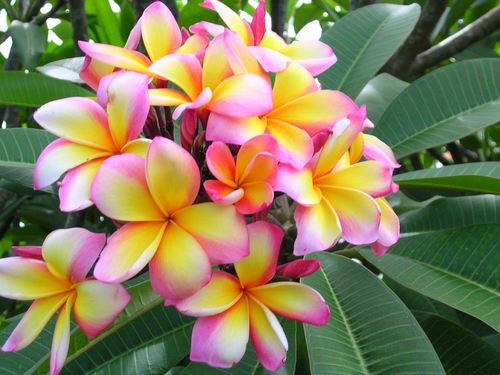
Although you don’t have to live in the tropics to grow Plumeria in the home garden, you should be aware of its growing requirements beforehand.
Growing Conditions and General Care
Often grown in the garden as an ornamental shrub or small tree, Plumeria plants need to be grown in well-draining soil that is slightly acidic. They also need at least six hours of full sun.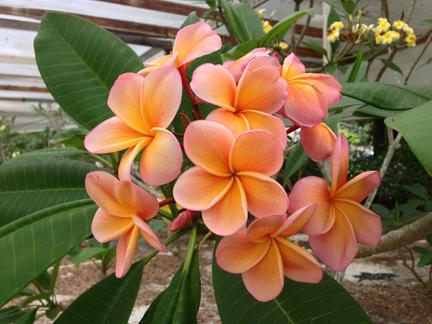
While the plants are fairly tolerant of both salt and windy conditions, they’re not tolerant of cold and must be protected. Therefore, they should be container grown in colder regions. In areas that may be warm most of the time but still fairly prone to cold winters, the plant can be dug up and overwintered indoors. Alternatively, you can sink container grown Plumerias in the ground, bringing them indoors once the temperatures begin to drop in fall. Once warmer temps return in spring, you can return the plants back outdoors.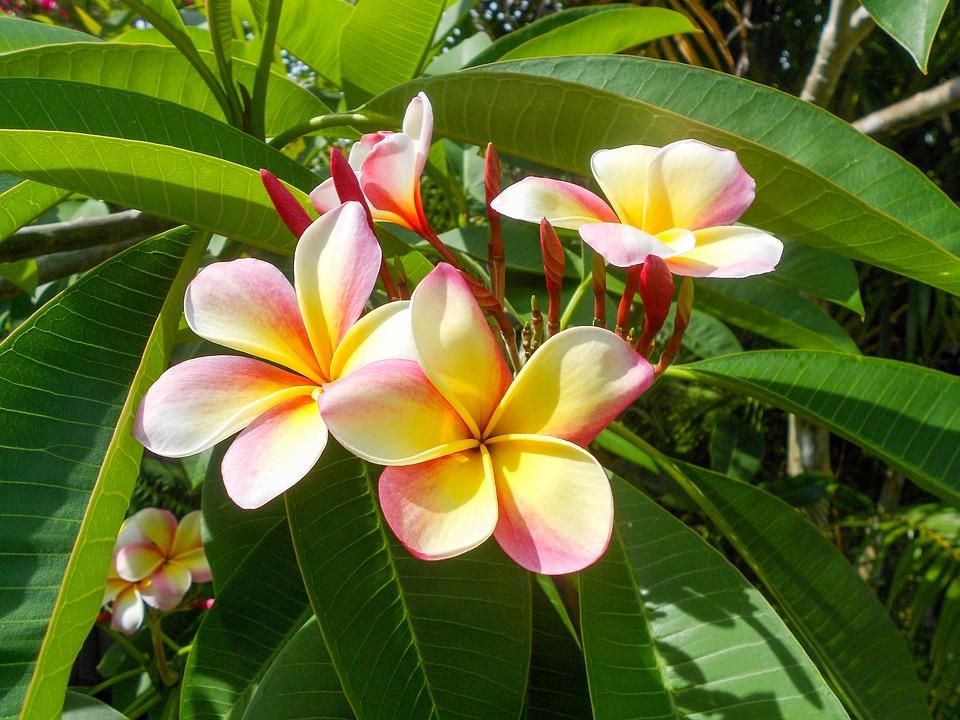
When growing Plumeria plants in pots, use a coarse, well-draining potting mix—cactus mix or perlite and sand should be fine.
Plumeria care, for the most part, is minimal. While Plumerias don’t like wet feet, they should be watered deeply when irrigated and then allowed to dry out some before watering again. They also need to be fertilized about every two to three weeks throughout their active growing season. Reduce watering in mid fall and stop completely once the plants enter dormancy in winter. Resume regular watering as new growth appears in spring. A high phosphate (phosphorus) fertilizer, like 10-30-10, will help encourage blooms. Giving them too much nitrogen will only result in more foliage growth and less flowering.
Pruning
Plumerias may be pruned as needed (up to 12 inches from ground) in late winter or early spring (prior to new growth); however, any drastic or hard pruning done may reduce flowering.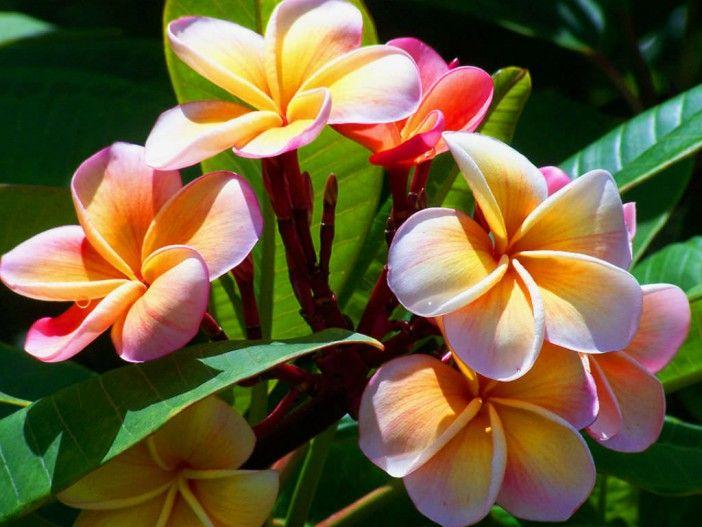
Propagation
These plants can also be propagated by seeds or cuttings in spring, with cuttings being the easiest and most preferred method. Insert cuttings about 2 inches in potting mix and water thoroughly.

Although you don’t have to live in the tropics to grow Plumeria in the home garden, you should be aware of its growing requirements beforehand.
Growing Conditions and General Care
Often grown in the garden as an ornamental shrub or small tree, Plumeria plants need to be grown in well-draining soil that is slightly acidic. They also need at least six hours of full sun.

While the plants are fairly tolerant of both salt and windy conditions, they’re not tolerant of cold and must be protected. Therefore, they should be container grown in colder regions. In areas that may be warm most of the time but still fairly prone to cold winters, the plant can be dug up and overwintered indoors. Alternatively, you can sink container grown Plumerias in the ground, bringing them indoors once the temperatures begin to drop in fall. Once warmer temps return in spring, you can return the plants back outdoors.

When growing Plumeria plants in pots, use a coarse, well-draining potting mix—cactus mix or perlite and sand should be fine.
Plumeria care, for the most part, is minimal. While Plumerias don’t like wet feet, they should be watered deeply when irrigated and then allowed to dry out some before watering again. They also need to be fertilized about every two to three weeks throughout their active growing season. Reduce watering in mid fall and stop completely once the plants enter dormancy in winter. Resume regular watering as new growth appears in spring. A high phosphate (phosphorus) fertilizer, like 10-30-10, will help encourage blooms. Giving them too much nitrogen will only result in more foliage growth and less flowering.

Pruning
Plumerias may be pruned as needed (up to 12 inches from ground) in late winter or early spring (prior to new growth); however, any drastic or hard pruning done may reduce flowering.

Propagation
These plants can also be propagated by seeds or cuttings in spring, with cuttings being the easiest and most preferred method. Insert cuttings about 2 inches in potting mix and water thoroughly.
0
0



